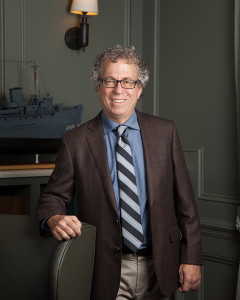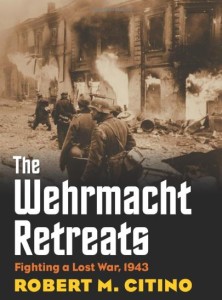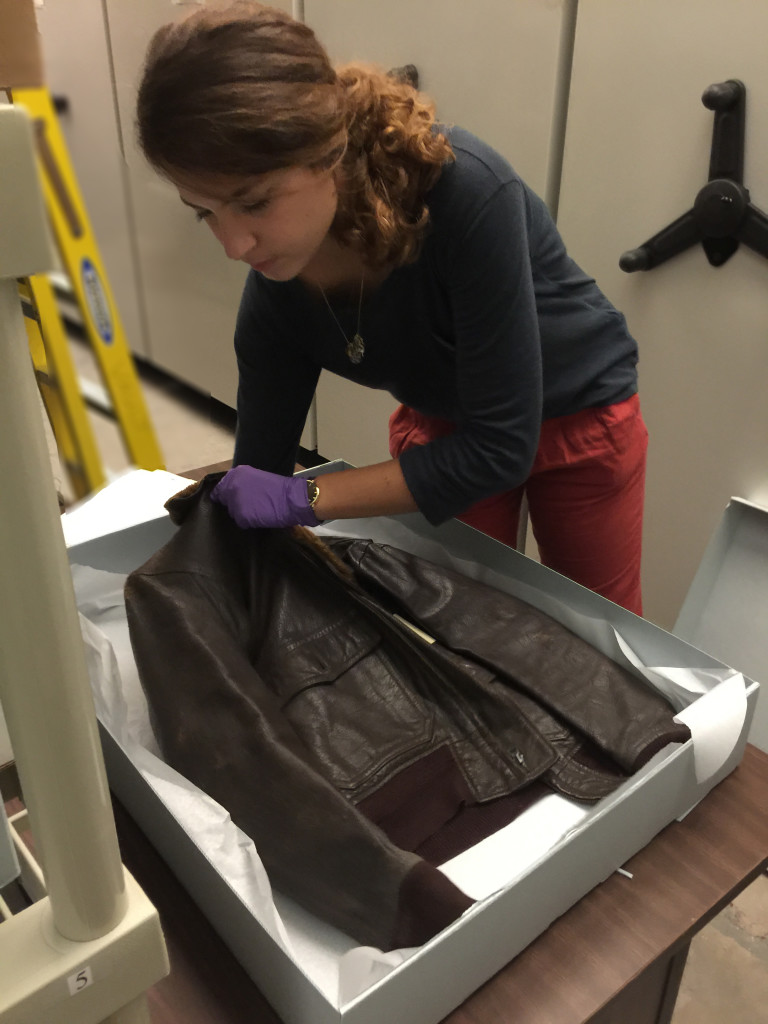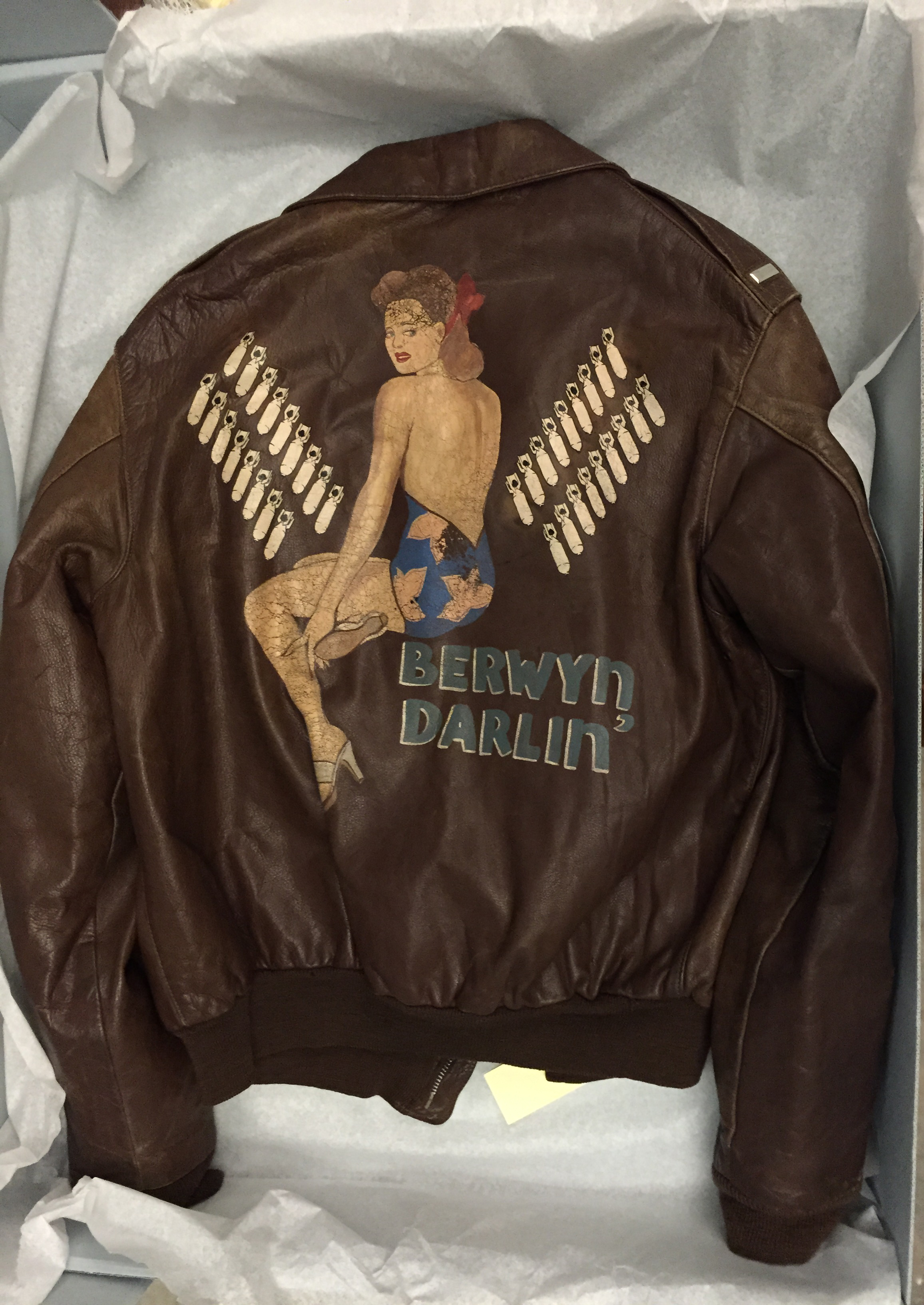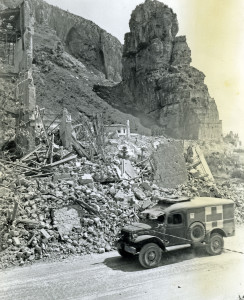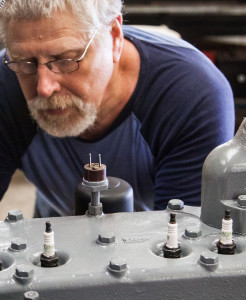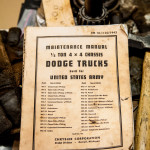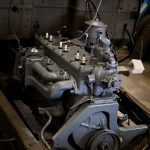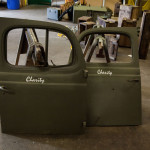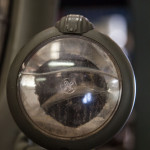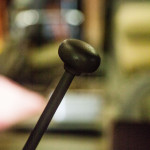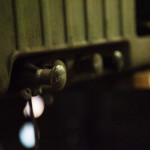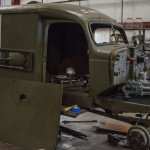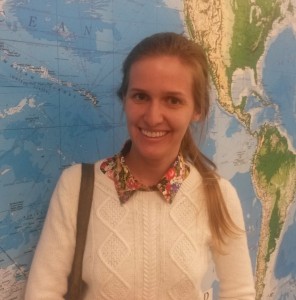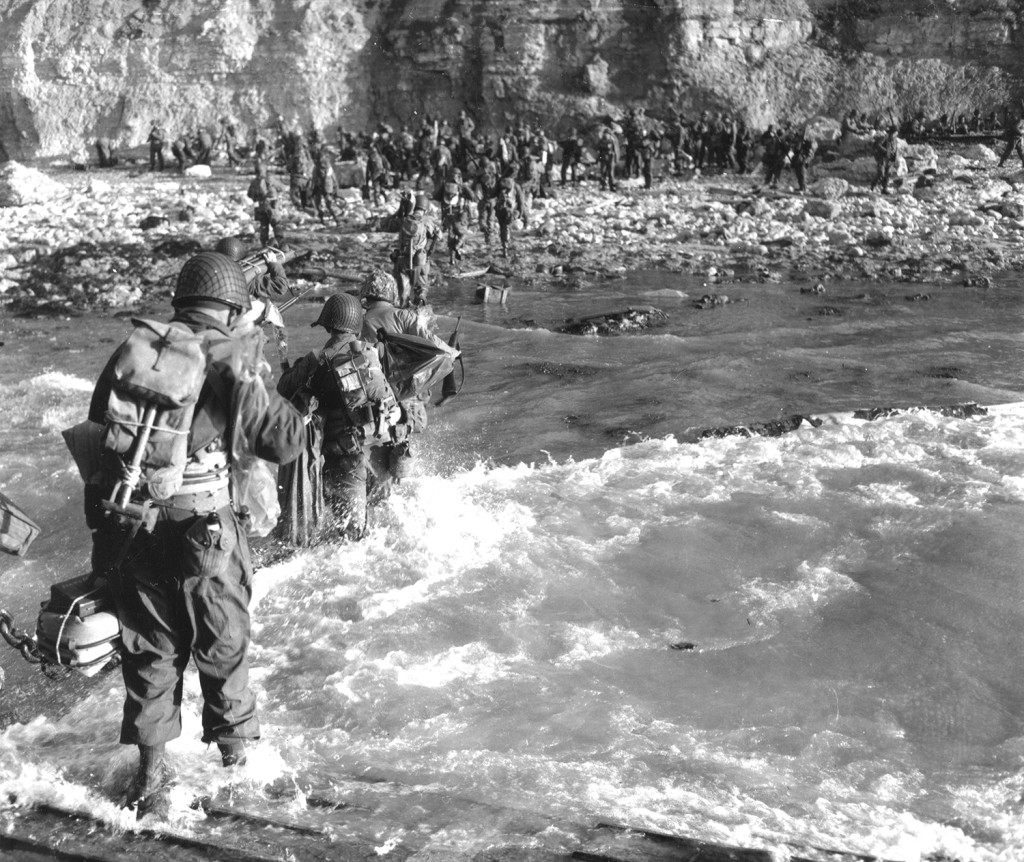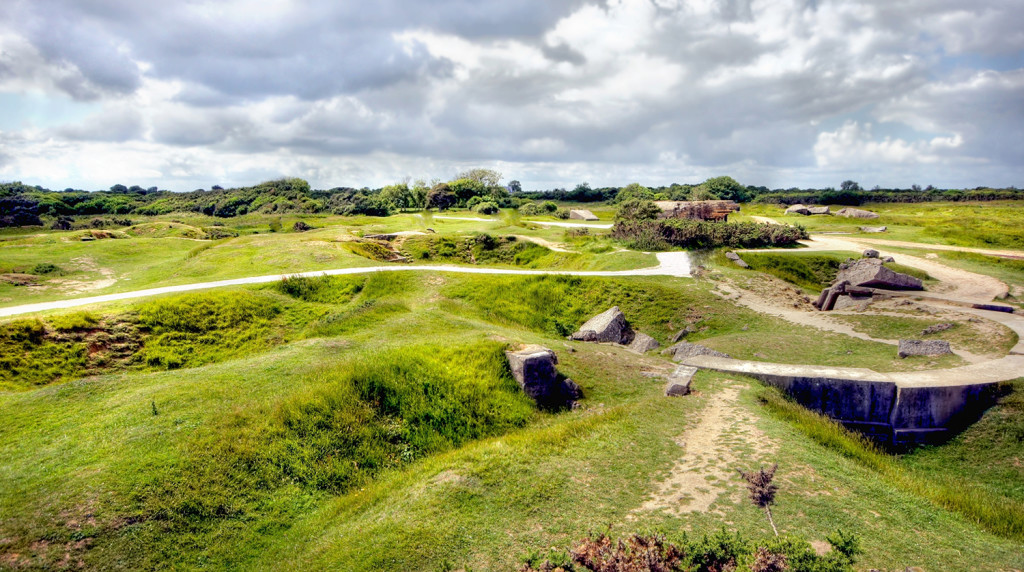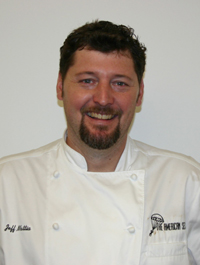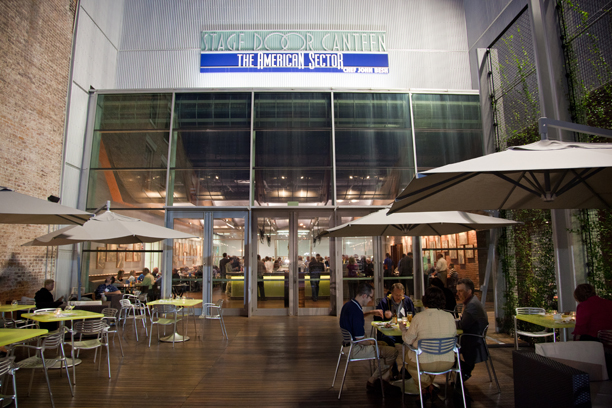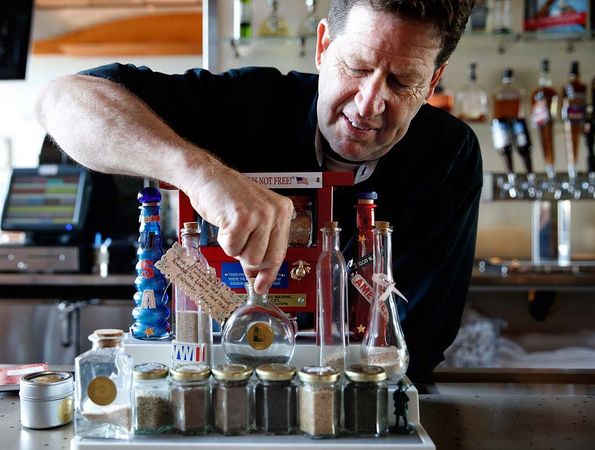Robert M. Citino, PhD, joins Museum as Samuel Zemurray Stone Senior Historian
Robert M. Citino, PhD, recently joined The National WWII Museum as Samuel Zemurray Stone Senior Historian, a job title that only hints at the many roles he’ll play here.
Consider: With Museum Senior Director of Research and History Keith Huxen, PhD, Citino will cohost the upcoming 2016 International Conference on World War II—stream it live at ww2conference.com from November 17–19—and will cap the Conference’s prelude Espionage Symposium by conducting a sure-to-be-fascinating conversation with Major General John Singlaub.
With Museum President & CEO Gordon H. “Nick” Mueller, he’ll lead an exciting new 2017 Museum tour of Normandy, the Seine River, and Paris.
Dr. Citino was sparked to a lifelong interest in World War II when his father, a veteran of the Pacific war, handed him a copy of Guadalcanal Diary.
“So I sat down and read the book,” said Citino of Richard Tregaskis’s classic account of embedding with US Marines for the early stages of the battle. “From there, I couldn’t read enough books on World War II.”
He went on to write nine books of his own, with a 10th due soon. Citino comes to the Museum after academic postings at the University of North Texas, Eastern Michigan University, Lake Erie College, the US Military Academy at West Point, and the Army War College. He currently chairs the Historical Advisory Subcommittee of the Department of the Army.
Among his areas of specialization as a historian is the German military, a pursuit enhanced by his fluency in the German language, which he began to study as an undergraduate at Ohio State University. A native of Cleveland, Ohio, he went on to get advanced degrees at Indiana University. Among his many academic honors, Dr. Citino was voted the No. 1 professor in the nation on the student-populated website RateMyProfessors.com
Dr. Citino is a regular contributor to World War II magazine and other publications, and speaks about the war widely, including as a regular presenter at the International Conference. Among the roles he’ll fill at the Museum, Dr. Citino will play a key part in the formation of the planned Institute for the Study of War and Democracy.
“I think the sky is the limit for what this place can achieve in the future,” he said.
Here’s an edited Q&A with Dr. Citino:
Q: Is there a moment you recall when you started on this path? Was there something you read, or a teacher, or one of your parents, who inspired you? I know your father was in World War II. Was there a eureka moment when you saw your path?
A: I get asked that a lot, because I’m an American who writes books on the German army, which is a kind of unusual career path perhaps. In a broader sense, in terms of World War II, you mentioned my father. My father was Army, and he fought on Guadalcanal. The word sounded so exotic to me as a little kid. What is Guadalcanal? I remember my father purchasing Richard Tregaskis’s great book, Guadalcanal Diary. Tregaskis was, at the time, what we would call an embedded reporter, for lack of a better term, with the Marine Corps on Guadalcanal. And my dad handed me this book called Guadalcanal Diary.
I was a precocious little boy. I don’t know how old I was, 4th or 5th grade maybe, but my dad told me to read this book. So I knuckled down, sat down and read the book. From there, I couldn’t read enough books on World War II. For me, oddly enough, that was my dad’s war—the Pacific war, carriers, aircraft soaring through the Pacific sky. Even today that stuff gets me going. Not in a scholarly way; I just love reading about it. You might say I’m a buff on the Pacific war. I loved reading books on World War II and that lasted all the way through high school. I went off to university—I was born in Cleveland, so I went down to Columbus—and in those days you had to take a foreign language to graduate. As you may know, that’s not necessarily true at a lot of American universities anymore. I don’t think it’s quite this flippant, I may be inventing it in my mind, but I think German was offered at a time that seemed to fit in the rest of my schedule. It wasn’t at 8 in the morning and it wasn’t 7 at night. I took German and I had an aptitude for it. I learned to read it really quickly and to read it a pretty high level. I feel thankful I was given that particular gift.
I have this WWII love and I have this language, so it was two eureka moments—my dad giving me Guadalcanal Diary and that I could access fairly sophisticated literature in another language. That’s what I’ve been doing ever since. I read German-language literature—archival sources, memoirs—in order to get some sense of what was going on in what Wellington famously called “the other side of the hill.”
This Museum, of course, is dedicated to the memory of the US Army and US soldier. And I’ve delved pretty deeply into those waters, as well—I’ve taught at West Point, I’ve taught at the US Army War College—I am a US military historian. But my real scholarly bona fides have been putting together that interest—that love, if you will—for studying World War II with some ability to access what the Germans thought they were doing.
When you get right down to it, it’s the most interesting question of all: a medium-sized power stuck in central Europe suddenly thought it was capable of conquering the world, and gave a pretty good impression of it in the first couple of years of the war. We look back and it all seems inevitable today that the three great powers—Britain, the Soviet Union, and the United States—would crush Germany. It didn’t look inevitable at the time. And so what the Germans thought they were doing on the battlefield, how they thought they were going to construct victory in World War II: that’s what I study. Not just Hitler, but the entire military establishment; I’m much more interested in general officers down to field-grade officers than I am in Hitler.
So saying that my dad fought in World War II is not a good answer. I was born in 1958. Everybody’s dad on my street on the west side of Cleveland fought in World War II, and most of the kids my age outgrew their love of World War II and went on to other professions and other endeavors, but I never did.
Was your dad one of those guys who didn’t talk about his service?
He certainly never gave me any combat stories. My father on Guadalcanal was a medic, so I can only imagine some of the things my father saw. A medic in a jungle environment is the worst possible combination. You’re undersourced, the climate’s horrible, the insect life, the dirt level. My dad didn’t give me a lot of stories. He met Eleanor Roosevelt. She was apparently on some kind of morale-building tour of the South Pacific, maybe on New Caledonia. I’ve never really looked it up. He had a passing encounter with Bob Hope and Jerry Colonna.
In terms of combat stories, it wasn’t really a rah-rah thing. I think my dad’s experience of World War II was that it was something he had to do. Everybody had to do it, and I think he was pretty happy that World War II was over. I think that is a fairly standard view of lot of WWII veterans. Probably the ones that come to the Museum are a little more interested, or maybe at this late stage in their life are more interested in talking about it now.
When I was growing up, I heard it as a series of vignettes. They were almost never shooting or explosions or combat or dying. I just didn’t hear those stories. He didn’t seem to carry weight. I was the youngest child of five, so it’s tough to psychoanalyze your parents. My dad was a pugnacious guy. I don’t know if he was pugnacious because of his wartime experience or if he was just born that way. We’re southern Italian. Citino. That’s the toe. I always have to ask my students, because many are spatially challenged, does it look like a boot to you? Most people say, yes it does, but there’s always a few people in class who say it doesn’t. But the toe of the boot is Calabria, and one of the first phrases of Calabrian dialog I ever learned means “Calabrians have hard heads.” They’re kind of pugnacious naturally. Whether my dad was carrying the weight of his WWII experience or the weight of 5,000 years of poor peasant ancestors, which is what Calabria still is today, is an open question. He’s passed now. I tell you, when I walked into Road to Tokyo, if my dad were here, I don’t know how he’d relate to the Guadalcanal gallery. I was stunned by it and I have never set foot on Guadalcanal.
About your specialty, was it something that was unstudied in Germany after the war? Were German scholars able to study their own army?
To their credit, Germans have faced the WWII experience in a really direct and full-on way. Perhaps not immediately, but certainly in the years since 1945. It would be difficult to say that the Germans have been living in denial, compared for example to the Japanese, for whom the subject of World War II and the story of exactly what happened is still not a topic for public conversation. The Germans have faced the WWII experience.
By and large, German scholars—not popular authors, but university professors by and large—are not too interested in operations, how and why this campaign took place, what its turning points were, what its pressure points were, how it could’ve gone differently. By and large, German scholars who study war today study atrocity. They study the Holocaust. The Holocaust and World War II become one in the German public and scholarly mind. So if you’re a young scholar and you want to write another book on the Battle of Kursk, that would be a difficult sell in the German scholarly community.
I got my PhD in 1984, and that process I’m describing was already well underway. And so you can fill your bookshelf with books on the German army written by American scholars. The vast majority are written by people who don’t read German, who have no ability to access original sources in the original tongue, so there’s a lot of stuff translated. It’s not like you can’t read any German documents. The US Army interrogated virtually all of the junior top-ranking German generals all the way down sometimes to lieutenant colonels about their wartime experience, and they’re all on file at the US Army War College in Carlisle, Pennsylvania. Those interrogations, those reports, have been translated. But reading something in its original language and reading something in translation are just two different things.
I think I developed a kind of feel for military German—specific words used in specific ways; military discourse, if you want to put it that way—describing the German experience. I can say I think I was doing something different. My books are scholarly. I’ve written nine and I’m putting the finishing touches on No. 10. I’ve had pretty good luck in the scholarly community. The books I’ve written have been well-received. I’ve also managed, I think, to reach a more popular audience in perhaps a way that not every scholar does. I’m certainly not talking about a Rick Atkinson level of popularity, but within a scholarly community that has some outreach to ordinary-interest Americans, the general reading public. That’s a phrase that excites all publishers. For World War II magazine, I have a regular column that comes out every two months.
With scholarly books, you sell in the hundreds. It gets you promotion to associate professor. It gets you tenure. I’ve been fortunate in doing that. My work on the German army reads a bit different than what people are used to reading. I have a pretty cold eye. Perhaps when I was younger I was enthused about the German operational achievement. I’ve developed a colder eye as I’ve gotten older. It’s always written from the inside, which gives it a slightly different cast.
Maybe one of the most impressive things about your career is your ranking on RateMyProfessors.com. It’s an incredible achievement. One of your students wrote, “I went into this class with zero understanding of the specifics of operational warfare, and I didn’t care about it either. By midterms I was driving everyone nuts explaining the nuts-and-bolts of Israel’s Sinai campaign.”
That was my Arab-Israeli War class.
That’s as good as it gets. What’s the secret?
RateMyProfessors.com in an online service. It’s owned by MTV. That was 2007 when I was given that. It wasn’t an award, it was a rating. And then it was a publicity flurry, so it got into USA Today, something we all dream about.
It’s a self-selected group that goes online. Amongst professors, we often kind of pooh-pooh it. I take that honor for what it was. A lot of my students over the course of many, many years bothered to take time out of their busy schedules and say something nice about me online. So, I was really pleased by it. The ancillary benefit was that an MTV camera truck pulled into my driveway one day at Ypsilanti, Michigan—at the time I won it, I was at Eastern Michigan University—and I don’t think my youngest daughter cared very much about what I did for a living until I was on MTV. They filmed me. They would read me those comments and they would film what I had to say. It was very funny. Those videos, if you Google “Citino” and “MTVU”, should still be online. I even got to play Fender Telecaster. I whipped off “Black Dog” by Led Zeppelin, or whatever it was they asked me to play.
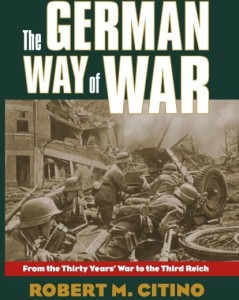 You asked me what the secret is. Any answer you give to that question is probably going to sound self-serving. I really love the subject. I live and breathe the subject. It’s not something I do when I walk into a classroom and then forget when I walk out of the classroom. And it’s not just World War II. It’s history in general. I’m a historian. I’ve taught 500 students in History of Western Civilization 101 all the way to very detailed classes and graduate seminars. I really do love history. If you can’t get geeked up walking into a class to talk about World War II for 45 minutes, and you’re making pretty good bread doing so …
You asked me what the secret is. Any answer you give to that question is probably going to sound self-serving. I really love the subject. I live and breathe the subject. It’s not something I do when I walk into a classroom and then forget when I walk out of the classroom. And it’s not just World War II. It’s history in general. I’m a historian. I’ve taught 500 students in History of Western Civilization 101 all the way to very detailed classes and graduate seminars. I really do love history. If you can’t get geeked up walking into a class to talk about World War II for 45 minutes, and you’re making pretty good bread doing so …
Maybe it’s the Italian heritage. I talk with my hands. I love talking to people. I think it’s a combination of loving that experience, loving your ability to express yourself, and then being given a topic that just became an obsession of mine from a very, very early age. I think if you read a lot of comments on RateMyProfessors.com, you hear it again and again: “The enthusiasm level of this class.” “The professor really digs this material. He really seems to be into it.” And I am. So maybe that is my secret. I was given a gift in that my talents matched up perfectly with my obsession. You know, I’d also like to be a power forward in the NBA, but that’s not happening. I had to drop that one early for a whole host of reasons.
My question was kind of a bridge to your role here at the Museum.
This is a new position, so it’s a work in progress, as I see it. I think everybody has a lot of good ideas about what the senior historian should be doing here. At the first level, I think one of the things I’m going to be doing is showing the flag, the academic and scholarly flag, for this institution, and reach perhaps some venues that it hasn’t really cracked in its 16 years of existence. I’m thinking of scholarly conferences. I give, I don’t know, maybe 10 or 12 public lectures, maybe more than that, a year, and a larger number of smaller talks, sometimes to local groups. I get invited by all sorts of diverse audiences. I’m flying next week to Washington, DC. General Milley, the chief of staff of the Army, read one of my books and told one of his officers, who got in touch with me. I’m addressing a seminar of very senior leaders in the Pentagon next week. So I have that scholarly side. I’m going to continue to publish books and articles, and every time I do that, there’s going to be The National WWII Museum speaking to various public groups. I have my toe in the intellectual military side, and now the Museum is going to be part of that conversation in the future.
As you know, Dr. Mueller has some pretty big ideas about this Institute for the Study of War and Democracy that we’re going to be getting underway. I don’t think the Museum will ever be a research library in the way that Harvard has a research library. You have to have hundreds of years and millions of books and another building—another 15-story building, in fact. I don’t think it’s going to do that. But it can have a role as a center of scholarship, as a clearinghouse of information, as a call of first resort for a student.
Say a graduate student wants to do something on the Home Front’s industrial mobilization. I or someone in the Institute for the Study of War and Democracy could have information to answer that student or that scholar. If you need a recommendation for a good speaker on whatever topic, the first place you would call would be The National WWII Museum. That’s what I see the Institute for the Study of War and Democracy doing. I think it’s going to require people who love the Museum and love the subject matter but who also have a foot in the scholarly and public community, so you get that synergy. It’s going to part of the Museum, but the displays here are always going to be what attracts people here. Right now, I guess I’m the first investment or the first installation of what the Institute for the Study of War and Democracy is going to be.
Here’s why I think the work is important, if you don’t mind me riffing off of your question. I love the operational side. That’s what I write. That’s what I’m really excited about. But the war is a big story, and in essence the war is about human freedom and human liberation. If World War II had been lost and the other side had won World War II, the globe would be a very different place. I know the Museum is going to have a Liberation Pavilion. If you look at how a place like America, or Western Europe, has changed since 1945 and the end of the war, it’s essentially been a story of individual liberation. It’s kind of messy. We don’t often like it. I know that for as many people who loved the 1960s in America, there was an equal number who hated them. Polling numbers for the Vietnam War, if they ever fell below 50 percent, I’d be surprised. I don’t have those numbers, but support for the war was always very high.
At any rate, people began to do their own thing, and you couldn’t be doing your own thing in a world run by the fascists. The Museum will always be about the operational side. I think that’s the heart and soul of what goes on here. Road to Tokyo, Road to Berlin—man, those are going to be bringing audiences in forever. But the Museum has to represent the broadcast possible meaning of World War II. We should be open to all approaches, and all themes, and I think the sky’s the limit for what this place can achieve in the future.
What kind of a Museum dedicated to World War II, with Higgins boats and aircraft everywhere, also puts up a Canopy of Peace? To me, when I heard that, that was the greatest thing I ever heard. I came here for my interview and saw them laying the pile caps. Unbelievable.
The Peace Canopy is nonfunctional. It doesn’t do anything, but it says something. While we celebrate the memory of the heroes who fought World War II, I don’t think anybody should really celebrate the war. The fact that a war had to be fought to maintain our basic freedoms is a human tragedy. It just shows how little we’ve progressed, not how far we’ve come. And that’s why I think putting up the Canopy of Peace is such a great thing for this Museum. I was really, really impressed when I saw they were doing it.
Story by Dave Walker, communications manager at The National WWII Museum.


